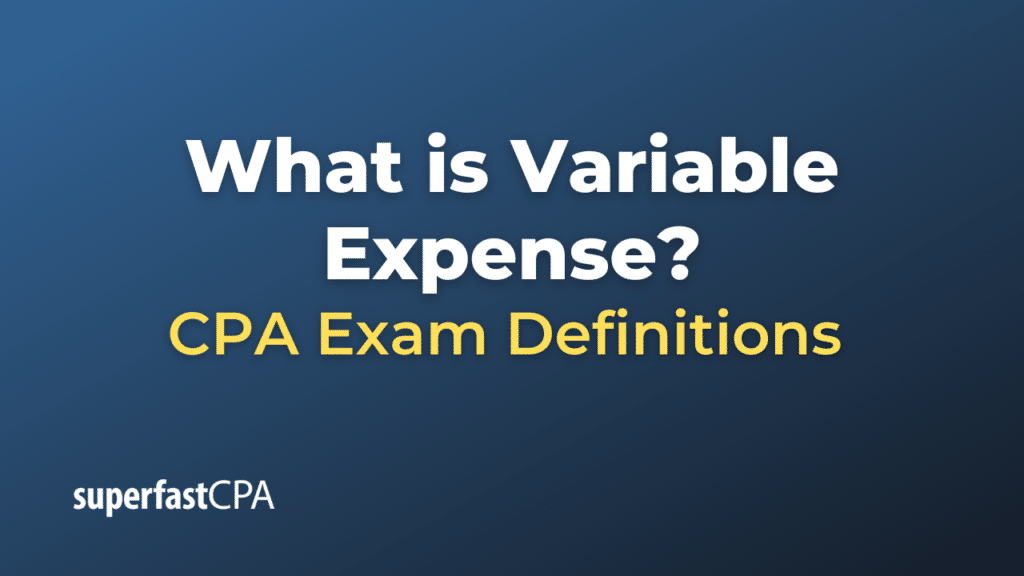Variable Expense
A variable expense is a cost that changes in proportion to the volume of goods or services that a business produces or sells. Unlike fixed expenses, which remain constant regardless of production or sales levels, variable expenses fluctuate as output changes. This means that variable expenses increase when production or sales volumes go up, and they decrease when volumes go down.
Components:
Variable expenses typically include costs such as:
- Direct Materials: The raw materials used in the manufacturing of a product.
- Direct Labor: The wages of the workers who are directly involved in the production process.
- Variable Overhead: Costs like utilities or supplies that change with the level of production.
- Shipping Costs: These can increase with the number of products sold.
- Sales Commissions: These are typically a percentage of the sales price and vary with the level of sales.
Formula:
In financial analysis, variable expenses are often expressed as a percentage of sales, also known as the variable expense ratio. The formula for this ratio is:
Variable Expense Ratio = Total Variable Expenses / Total Sales × 100
Advantages:
- Flexibility: These expenses can be easier to cut than fixed costs when you need to reduce expenditures.
- Scalability : As the business grows, these costs will naturally scale with production and sales, making them predictable within a certain volume range.
Disadvantages:
- Unpredictability: If not managed carefully, variable expenses can fluctuate significantly, making it difficult to forecast budgets accurately.
- Volume Dependency: High variable costs can put a company at risk if sales volumes decrease suddenly.
Example of Variable Expense
Let’s consider a fictional coffee shop called “JavaJoy” to illustrate the concept of variable expenses. The coffee shop sells coffee, tea, and pastries.
Assumptions:
- Each cup of coffee sold has a variable expense of $1 for coffee beans, filters, and other materials.
- Every pastry sold has a variable expense of $0.75 for flour, butter, and other ingredients.
- Salespeople earn a 10% commission on total sales, which is also a variable expense.
- In the month of September, the shop sells 5,000 cups of coffee and 2,000 pastries, with total sales revenue of $25,000.
Calculation of Variable Expenses:
- Variable Expense for Coffee Sales
- 5,000 cups x $1 per cup = $5,000
- Variable Expense for Pastry Sales
- 2,000 pastries x $0.75 per pastry = $1,500
- Sales Commission
- 10% of $25,000 = $2,500
- Total Variable Expenses for September
- $5,000 (coffee) + $1,500 (pastries) + $2,500 (commission) = $9,000
JavaJoy’s Variable Expenses Summary:
For the month of September, the coffee shop’s variable expenses would be broken down as follows:
- Coffee Sales: $5,000
- Pastry Sales: $1,500
- Sales Commission: $2,500
- Total Variable Expenses: $9,000
JavaJoy can use this information for budgeting, pricing strategy, and assessing overall profitability. It shows how much the cost of goods and services will rise as sales increase, which is important for managing cash flow and making informed business decisions.
By understanding their variable expenses, JavaJoy can also determine the break-even point, optimize sales strategies, and decide on whether they can afford to scale their operations.













